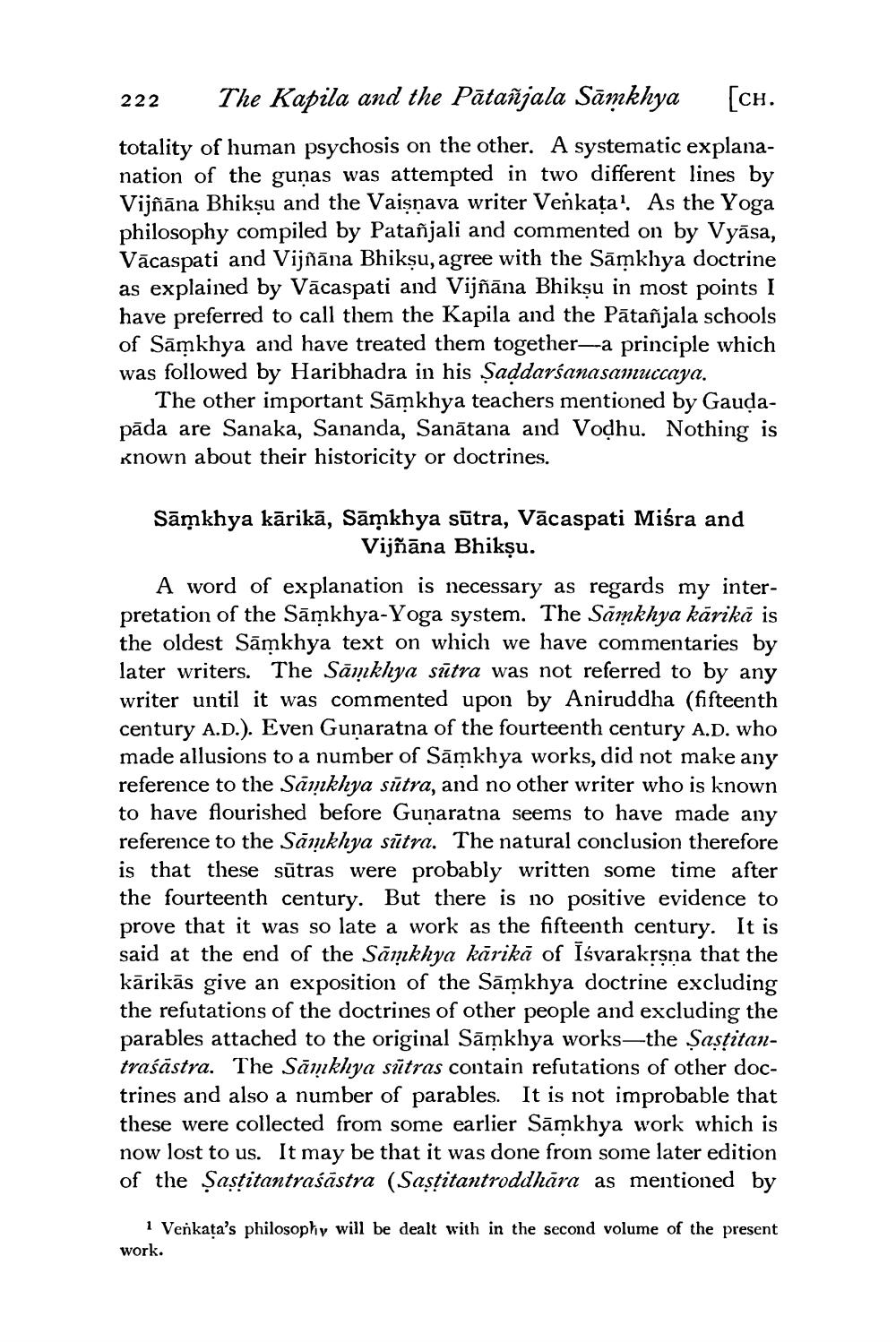________________
222 The Kapila and the Pātañjala Sāmkhya [CH. totality of human psychosis on the other. A systematic explananation of the gunas was attempted in two different lines by Vijñāna Bhikṣu and the Vaişnava writer Venkața!. As the Yoga philosophy compiled by Patañjali and commented on by Vyāsa, Vācaspati and Vijñāna Bhiksu, agree with the Sāmkhya doctrine as explained by Vācaspati and Vijñāna Bhikṣu in most points I have preferred to call them the Kapila and the Pātañjala schools of Sāmkhya and have treated them together--a principle which was followed by Haribhadra in his Şaddarśanasamuccaya.
The other important Sāmkhya teachers mentioned by Gaudapāda are Sanaka, Sananda, Sanātana and Vodhu. Nothing is known about their historicity or doctrines.
Sāmkhya kārikā, Sāmkhya sūtra, Vācaspati Miśra and
Vijñāna Bhikṣu. A word of explanation is necessary as regards my interpretation of the Sāmkhya-Yoga system. The Säinkhya kārikā is the oldest Samkhya text on which we have commentaries by later writers. The Samkhya sūtra was not referred to by any writer until it was commented upon by Aniruddha (fifteenth century A.D.). Even Gunaratna of the fourteenth century A.D. who made allusions to a number of Sāmkhya works, did not make any reference to the Samkhya sutra, and no other writer who is known to have flourished before Gunaratna seems to have made any reference to the Samkhya sūtra. The natural conclusion therefore is that these sūtras were probably written some time after the fourteenth century. But there is no positive evidence to prove that it was so late a work as the fifteenth century. It is said at the end of the Samkhya kārikā of īśvarakrsna that the kārikās give an exposition of the Sāmkhya doctrine excluding the refutations of the doctrines of other people and excluding the parables attached to the original Sāmkhya works—the Şastitantraśāstra. The Samkhya sätras contain refutations of other doctrines and also a number of parables. It is not improbable that these were collected from some earlier Sāmkhya work which is now lost to us. It may be that it was done from some later edition of the Şastitantraśāstra (Sastitantroddhāra as mentioned by
1 Venkata's philosopliy will be dealt with in the second volume of the present work.




